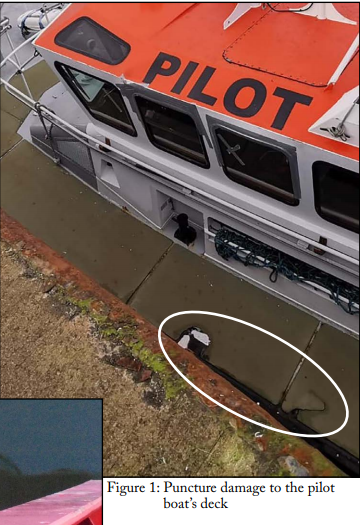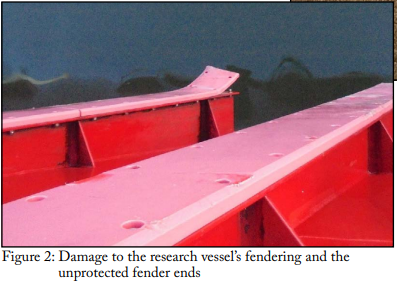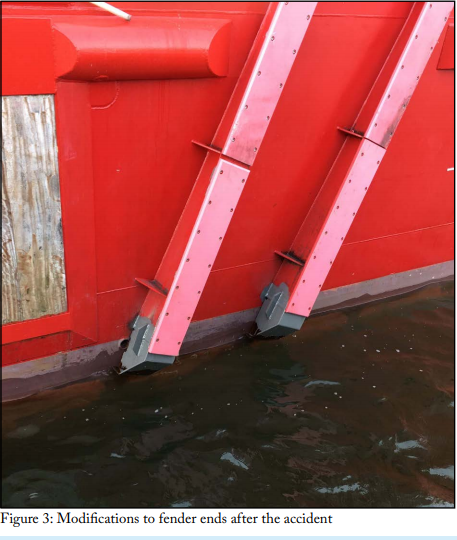Following the second edition of Safety Digest, it is described how a pilot tranfer operation led to an unsafe interaction between two vessels.
Incident
A large research vessel was approaching a harbour and preparing to embark a pilot. The wind was over 30kts from a southerly direction and, after several days of southerly winds, there was an appreciable swell from the same direction.
From the pilot boat, the pilot requested that the research vessel maintain a westerly heading, putting the wind on its port beam and creating a lee to starboard for the transfer.
As the pilot boat approached the boarding point, the research vessel rolled to port, causing the smaller vessel to be pulled in towards the larger vessel.
When the research vessel then rolled back to starboard, its diagonal side fendering struck and punctured the deck edge of the pilot boat (Figure 1).

Further contact damaged the research vessel’s fendering (Figure 2) and the pilot boat’s wheelhouse.

Lessons learned:
- Achieving the optimum conditions for a pilot transfer is a balancing act between wind, swell, sea room and the limitations of the vessels involved. In this case, the pilot’s aim was to achieve shelter from the strong southerly wind for the transfer; the westerly heading was also commonly used at this port given the sea room available. However, this heading had the consequence of inducing a signifcant roll due to the swell, resulting in the situation of unsafe interaction between the two vessels.
- The fendering on the survey vessel was of a diagonal type, which terminated just below the waterline, so when the vessel rolled, the ends emerged from the water. The fender ends were not protected or faired into the hull, leading to sharp protruding corners, which penetrated the deck of the pilot boat.

- Following the accident, the fender ends were modifed to eliminate the abrupt termination in order to reduce the risk of recurrence.
- When the contact happened, the pilot was in an exposed position on the deck, ready to board the research vessel. It was extremely fortunate that he was not knocked overboard or injured when the pilot boat was pinned to the research vessel’s side. This highlights the risk inherent in pilot transfer operations and the need for careful judgment about when to move outside the safety zone.






























































